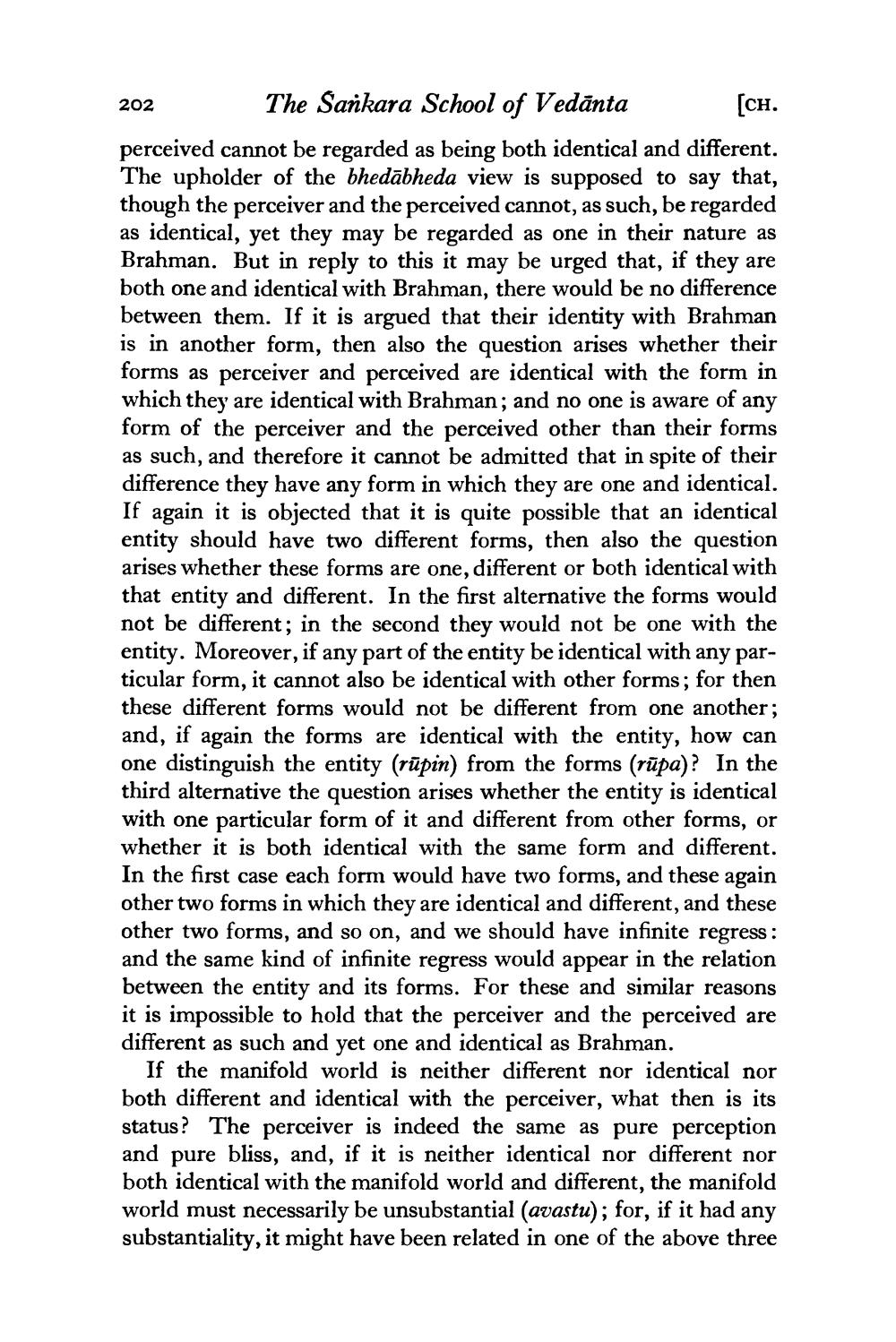________________
202
The Sankara School of Vedānta [CH. perceived cannot be regarded as being both identical and different. The upholder of the bhedābheda view is supposed to say that, though the perceiver and the perceived cannot, as such, be regarded as identical, yet they may be regarded as one in their nature as Brahman. But in reply to this it may be urged that, if they are both one and identical with Brahman, there would be no difference between them. If it is argued that their identity with Brahman is in another form, then also the question arises whether their forms as perceiver and perceived are identical with the form in which they are identical with Brahman; and no one is aware of any form of the perceiver and the perceived other than their forms as such, and therefore it cannot be admitted that in spite of their difference they have any form in which they are one and identical. If again it is objected that it is quite possible that an identical entity should have two different forms, then also the question arises whether these forms are one, different or both identical with that entity and different. In the first alternative the forms would not be different; in the second they would not be one with the entity. Moreover, if any part of the entity be identical with any particular form, it cannot also be identical with other forms; for then these different forms would not be different from one another; and, if again the forms are identical with the entity, how can one distinguish the entity (rūpin) from the forms (rūpa)? In the third alternative the question arises whether the entity is identical with one particular form of it and different from other forms, or whether it is both identical with the same form and different. In the first case each form would have two forms, and these again other two forms in which they are identical and different, and these other two forms, and so on, and we should have infinite regress: and the same kind of infinite regress would appear in the relation between the entity and its forms. For these and similar reasons it is impossible to hold that the perceiver and the perceived are different as such and yet one and identical as Brahman.
If the manifold world is neither different nor identical nor both different and identical with the perceiver, what then is its status? The perceiver is indeed the same as pure perception and pure bliss, and, if it is neither identical nor different nor both identical with the manifold world and different, the manifold
vorld must necessarily be unsubstantial (avastu); for, if it had any substantiality, it might have been related in one of the above three




